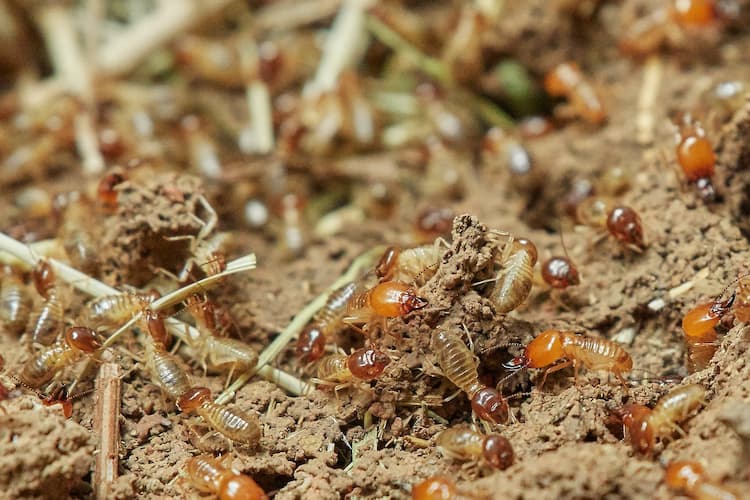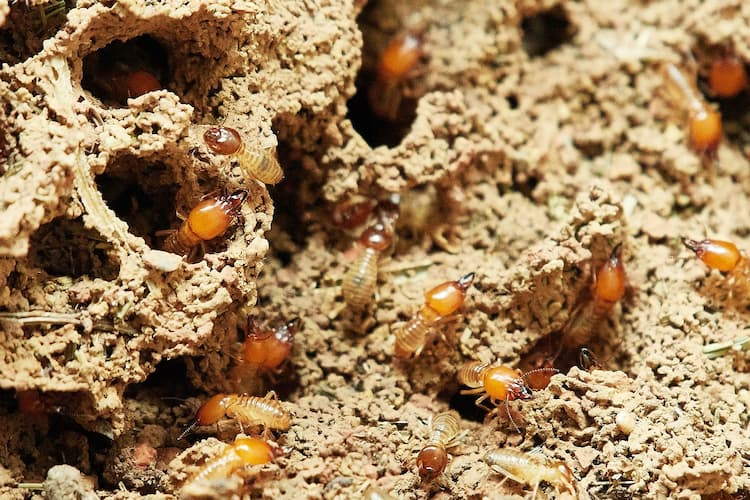Among the many pests that can harm your home or property’s structure, termites might be the most dangerous and expensive to deal with. In the US, termites cause more than $1 billion worth of damage annually. Termites, whose colonies can number up to a million, inflict more damage to homes in the United States than storms and fire combined.
As a result of having to replace damaged wood in their homes, homeowners frequently find themselves included in that statistic. Under extreme circumstances, termites have the potential to tunnel through your home’s entire wooden framework, rendering it unsafe for habitation.
Because termites are underground organisms – hence the moniker “hidden invaders” – they can be challenging to control. Fortunately, termite infestations can be prevented as well as treated.
If you’re tired of dealing with these pests and looking for termite control in Long Island, NY, then check out the services that Optimum Pest Control can offer you.
 Termite Control in Long Island, NY
Termite Control in Long Island, NY
Termites rarely come out of the soil, mud tubes, or food sources they’re tunneling through, so the first line of defense is to be watchful for them. Until they notice a swarm or discover damage during construction, most people are unaware that they have termites.
Get a free termite inspection as soon as possible if you see them in your house or on your property. Know that termites will have more time to harm your home if you wait longer. If you’re sure that you need to treat termites immediately, get in touch with us to receive timely termite control services from our licensed exterminators.
Numerous termite species have the potential to invade and destroy any part of your home, including the foundation and exterior. They eat wood from the inside out, so it may be hard to know the full extent of the damage. That is why, seeking expert assistance from a local, seasoned pest control company that can provide you termite control is the best course of action.
How to Recognize Termites?
Termites are small, off-white insects that resemble ants. They’re not like ants, though, in that they consume the cellulose found in wood. They can tunnel through the wooden structural elements of buildings and demolish them while remaining mostly hidden beneath the surface.
A termite colony’s ideal point of entry is any wood that comes into contact with the ground, like the cladding or exterior trim on your house. They can construct mud tunnels or tubes to access wood that is several feet above the ground if the wood does not come into contact with the soil.
The appearance of termites and flying ants are so similar that you could confuse them for one another if you didn’t look closely. You must correctly identify the insect causing your infestation in order to treat your pests effectively.
Down below, are some differences between ants and termites:
- Ants have a distinctly defined thorax and constricted abdomen. Their front wings are slightly bigger than their back wings and smaller than their body. Their antennae are elongated in the first segment and have a characteristic elbow shape.
- The thick, continuous ribbed abdomen of termites lacks a discernible waist. Their two sets of vein-filled wings are twice as long as their body and have equal lengths. They lack eyes and have straight, somewhat short antennae.
What are the Common Types of Termites?
The best way to describe a termite is as an insect that eats wood. Termites consume any material that contains cellulose. This covers things like sheetrock, wood, paper, and so forth.
They come in three varieties: subterranean, dry wood, and damp wood. While dry wood termites are rarely found in the United States, they live in extremely dry wood and are typically found in heavily forested areas.
The most destructive kinds of termites are subterranean ones, which live primarily in the soil and need a moist environment.
 Signs of a Termite Infestation
Signs of a Termite Infestation
There are several telltale signs of termites’ presence in addition to their visual identification.
To help you determine whether your house is the target of a termite colony, you can look out for these signs:
- Mud Tunnels / Mud Tubes: Termites travel along exposed areas in these cylinder-shaped pathways in search of food. While termites are not in the soil, they can survive thanks to these tunnels, which retain moisture. Termites use their saliva and soil to build this. These might appear as dried mud branches affixed to the side of poles, metal fences, and other structures.
- Swarming Termites: Swarming termites are a common indicator of a termite infestation. If they appear above ground in your house, it’s a near-certain sign that there’s a problem. These are the termites that reproduce in order to start new colonies near your house.
- Shed Wings: You might discover shed wings near windows, doors, and other entryways following the swarm. Most of these swarmers will shed their wings as part of their reproductive process. For this reason, one of the most typical indicators of a termite infestation is shed wings.
- Damage: Termites eat wood from the inside out, so it’s challenging to see damage. That could, however, manifest as weakening and hollow wood or bubbling wallpaper.
What is the Best Termite Treatment?
This is a frequently asked question when attempting to defend your home against termites. But unfortunately, as straightforward as the question is, it does not come with a straightforward answer.
The kind of termites that have infested the property (Formosan, drywood, subterranean, etc.), their degree of infestation, and other variables will determine the most effective way to treat them.
A knowledgeable termite control specialist will conduct a thorough inspection of your property to pinpoint the issue and identify the best practical solution for your unique circumstances. It commonly depends on various factors such as:
- Whether you want to keep termites out of your house or defend it from them in the future
- The type of termite infestation and the species of the present termites
- How and with which materials the building was constructed in the first place
- Environmental factors like the surrounding land’s slope and type of soil
How Do I Avoid Getting Infested by Termites in the First Place?
You can save a lot of money by taking preventative measures against termites. Eliminating damp areas around your home is crucial to preventing termites because termite colonies require moisture to survive and thrive.
Down below are some tips on termite prevention:
- Maintaining appropriate drainage and grading, along with upkeep of gutters and downspouts, will help keep the earth surrounding the foundation dry.
- Reduce the amount of wood-to-ground contact as much as you can.
- Minimize gaps that allow termites to enter the building and seal any gaps around where utilities pass through the wall with caulk, grout, or cement in cement foundations.
- If you have wood touching the ground, try replacing the soil around your house with sand. It is impossible for termites to tunnel through sand.
- Make sure that shrubs and trees aren’t placed too near to the building and aren’t allowed to grow up against any exposed wood.
- Never store or pile firewood or wood waste next to your house.
How Do I Permanently Control Termites?
Even though eliminating termites from the environment permanently is not possible or desirable, you can at least stop them from entering your home and manage any active colonies that are close by.
To protect your wooden furniture, flooring, and wall panels from termites, you must find quick and efficient termite solutions, especially during the monsoon season when they’re most active.
Although working with a professional is always the best option, it never hurts to try alternative solutions and techniques:
Contact a Pest Control Expert
The first one is the most obvious: Consider hiring a professional exterminator if your termite colony is large; they can offer you the best termite treatment at your house. Think about choosing a service that doesn’t use dangerous substances.
Use Plywood with BWR Grade
When building new furniture, use premium BWR (boiling water resistant) grade plywood. This plywood is chemically treated, giving it remarkable qualities like fire, moisture, and termite resistance. Strong bonding between each layer of plywood is established by synthetic resins, ensuring increased resilience and durability against potential damage.
Regulate the Moisture
As we have stated above, you need to be aware of the level of dampness in and around your home. High moisture content areas are a magnet for termites. If your walls are damp, check for water seepage and make immediate repairs. Termites can be drawn to and thrive in environments that are too moist or have water leaks both inside and outside of your home.
Let the Sunshine In
For two or three days, expose termite-infested furniture to direct sunlight nonstop to act as a natural disinfectant. Since termites prefer to live in damp, dark environments and will not survive in direct sunlight, this is one of the simplest methods to permanently eradicate them.
Do not Forget!
Keep in mind that no DIY tip is as efficient as hiring a qualified termite exterminator. That is why to avoid excessive damage to your house and your wallet try to go with the first option and contact your local pest control companies.
What Attracts Termites?
To understand what may be attracting termites to your home, you first need to understand where they like to live and what they like to eat.
Keeping those two factors in mind; here are some things that may draw termites to your property:
- Wood is what attracts termites. Additionally, termites may be drawn to damp or dry wood, depending on their species. Wood is what termites eat, so it makes sense that wood would be the first to attract them.
- Soil that is damp attracts termites. Termites can survive and fend off dehydration and death in moist soils. Certain termite species even build mud tubes out of the moist soil.
- Termites are drawn to warm, dark environments. Termites seek out the best locations to hide because they enjoy solitude. To prevent termites, make sure to clean out pipes and gutters as frequently as you can.
Why Choose Us?
In order to keep termites under control and eradicate colonies around your home, we employ a very aggressive strategy that will keep it safe all year long.
Several techniques exist for managing termites. Since every situation is unique, we must inspect your home before recommending the best course of action.
We combine a baiting system with liquid treatment. To assist in getting rid of your infestation, we employ the best-selling bait stations. The nationwide Advance Termite Baiting System is intended exclusively for subterranean termites.
We at Optimum Pest Control are committed to shielding your family from the dangers of pests. So, if you’re in need of termite control in Long Island, NY, you should give us a call!
Optimum Pest Control: Your Local Pest Control Experts
Based in Wantagh, New York, we, as Optimum Pest Control, have been providing services to the Long Island region for over 20 years.
We use state-of-the-art methods while keeping environmental preservation in mind. Feel free to review the testimonials we’ve received as we have built our business on word-of-mouth recommendations from happy customers and providing outstanding customer service.
If you think you may have an infestation and need assistance, don’t hesitate to call us whenever you want. We’re open Monday through Friday from 8 AM to 8 PM (8 AM to 4 PM on Saturdays).
